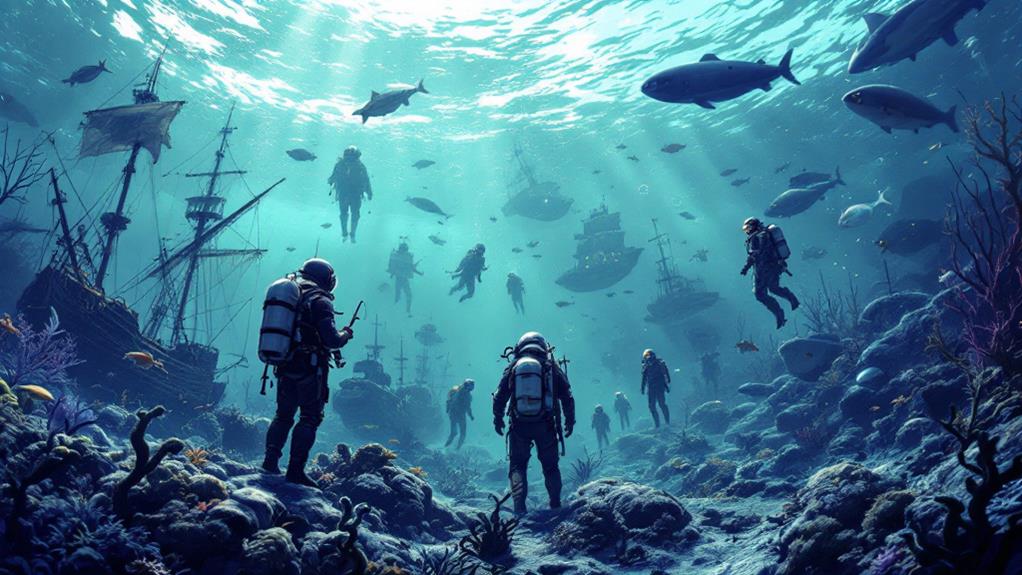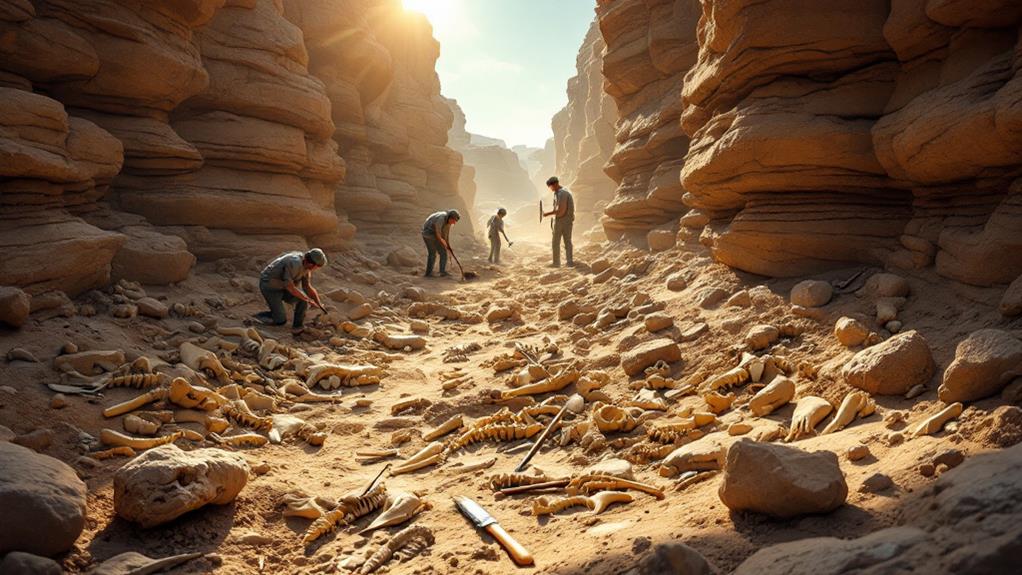The History of Hydrology: Understanding Water in the Environment
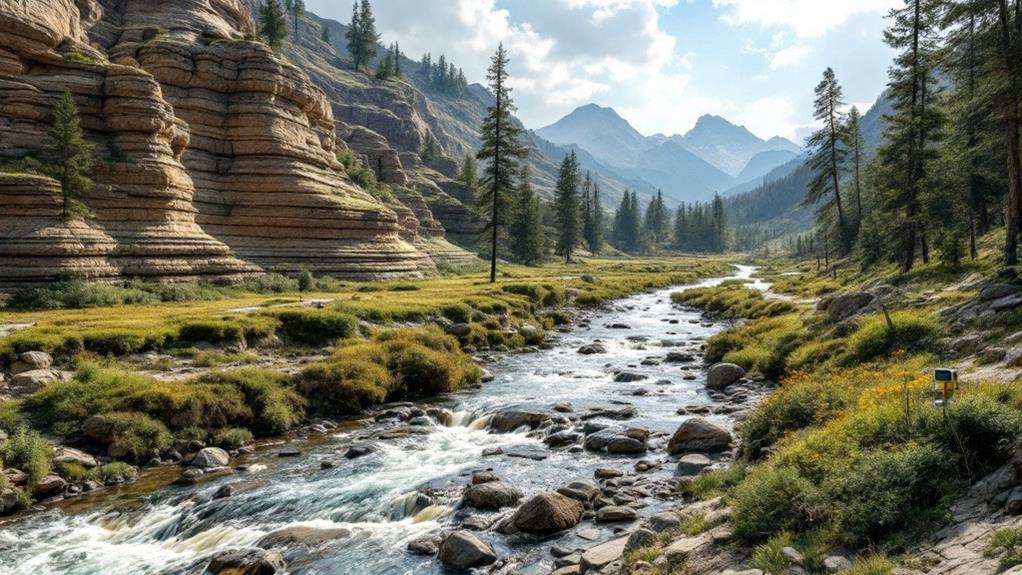
The history of hydrology stretches back to ancient civilizations' innovative water management systems. You'll find early scientific observations facilitating the path for Renaissance and Enlightenment contributions, which established key hydrological principles. The Industrial Revolution considerably impacted water resources, leading to new challenges and solutions. In the 20th century, technological advancements revolutionized the field, introducing remote sensing and computational modeling. Today, hydrology plays an indispensable role in addressing climate change and ensuring sustainable water management. From ancient aqueducts to modern satellite technology, the expedition of understanding water in the environment is a captivating exploration of human ingenuity and scientific progress.
Ancient Water Management Systems
How did ancient civilizations tackle the challenge of water management? You'll find that they developed ingenious solutions to harness and distribute water resources. Ancient irrigation methods played a pivotal role in sustaining early agricultural societies. The Egyptians, for instance, created a complex system of canals and dikes to control Nile flooding and irrigate crops. In Mesopotamia, you'd have seen the impressive qanat system, underground tunnels that transported water from mountain aquifers to arid regions.
Ancient cultures also mastered groundwater harvesting techniques. The Romans constructed aqueducts to bring fresh water from distant springs to their cities, while the Indus Valley civilization built sophisticated drainage systems. In South America, the Nazca people developed puquios, spiral-shaped wells that tapped into underground water sources.
You'll notice that these early water management systems weren't just about agriculture. They also supported urban development, sanitation, and even recreational uses. By studying these ancient techniques, you can gain exceptional insights into sustainable water management practices that are still relevant today.
Early Scientific Observations
Moving beyond ancient water management systems, early scientific observations laid the groundwork for modern hydrology. You'll find that these initial scientific endeavors were pivotal in developing our understanding of water's behavior in the environment.
In the 17th century, you'd see pioneers like Pierre Perrault and Edme Mariotte conducting revolutionary research. They focused on early rainfall measurements, meticulously collecting data on precipitation and river flow in the Seine basin. Their work demonstrated that rainfall alone was sufficient to account for river flow, debunking previous misconceptions.
You'd also encounter Edmund Halley's significant contributions to hydrology. He conducted evaporation rate investigations on the Mediterranean Sea, providing meaningful insights into the water cycle. These studies helped establish the concept of the hydrologic cycle as we comprehend it today.
During this period, you'd notice an increasing emphasis on quantitative observations. Scientists began using instruments like rain gauges and flow meters to collect more precise data. This shift towards exact measurements marked a turning point in hydrological studies, laying the groundwork for more sophisticated theories and models in the future.
Renaissance and Enlightenment Contributions

The Renaissance and Enlightenment periods ushered in a fresh chapter of scientific exploration that greatly advanced hydrological understanding. You'll find that during this time, scholars began to challenge traditional beliefs and conduct rigorous scientific experiments to uncover the mysteries of water.
Leonardo da Vinci, the quintessential Renaissance man, made significant contributions to hydrology. He observed and documented water's behavior, studying river flows and proposing innovative hydraulic designs. In the 17th century, Pierre Perrault and Edmé Mariotte conducted pioneering experiments on the Seine River, demonstrating that rainfall was sufficient to account for river flow. This work laid the foundation for the concept of the hydrologic cycle.
The Enlightenment saw further advancements, with philosophical debates spurring scientific inquiry. You'll note that figures like Edmund Halley investigated evaporation and precipitation, while Daniel Bernoulli developed principles of fluid dynamics. These contributions were vital in shaping our modern understanding of hydrology. By the end of the 18th century, you'd have seen a dramatic shift from speculative theories to evidence-based knowledge about water's role in the environment.
Industrial Revolution's Hydrological Impact
As scientific understanding of hydrology grew, the Industrial Revolution brought unparalleled changes to water management and usage. You'd see factories sprouting up along rivers, utilizing water for power and as a means of factory waste disposal. This newfound industrial demand for water resources led to significant alterations in natural water systems.
Urban population growth during this period put immense pressure on existing water infrastructure. Cities expanded rapidly, and you'd witness the development of more sophisticated water supply and sewage systems to meet the growing needs. However, these advancements often came at a cost to the environment.
The Industrial Revolution's impact on hydrology wasn't limited to urban areas. You'd notice changes in rural terrain too, with the construction of canals and reservoirs to support industrial activities. These modifications altered natural water flow patterns and impacted local ecosystems.
As industrialization progressed, you'd observe an increased awareness of water pollution and its effects on public health. This recognition eventually led to the development of water treatment technologies and the establishment of regulations to protect water resources, shaping modern hydrological practices.
Twentieth Century Technological Advancements
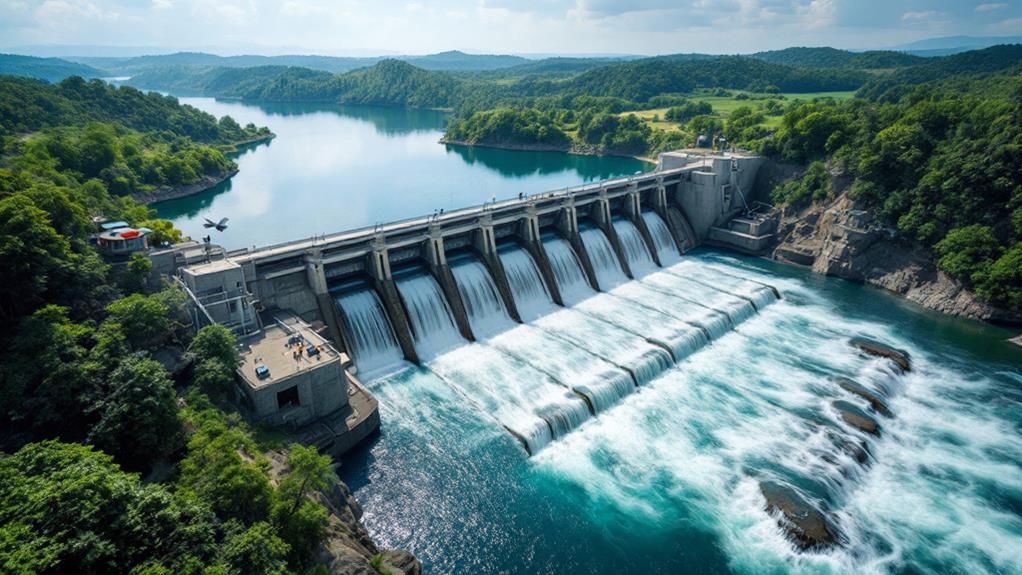
Ushering in a pioneering period of hydrological understanding, the twentieth century witnessed transformative technological advancements that revolutionized the field. You'd see notable progress in data collection, analysis, and modeling techniques that enhanced our grasp of water systems.
Remote sensing technologies, like satellite imagery and LIDAR, allowed you to map and monitor water resources on unparalleled scales. These tools provided pivotal insights into surface water dynamics, groundwater reserves, and climate impacts on hydrological cycles.
Groundwater conservation efforts benefited from improved well-drilling techniques and geophysical methods. You could now accurately locate and assess aquifers, leading to more sustainable water use practices.
Computer modeling and simulation software emerged as transformative. They enabled you to predict flood risks, optimize water resource management, and understand complex watershed interactions.
Advancements in water quality testing and treatment technologies ensured safer drinking water and improved wastewater management. You'd find innovative filtration systems and chemical treatments that tackled emerging contaminants.
These technological leaps not only expanded scientific knowledge but also informed policy decisions, shaping modern water management strategies and paving the way for sustainable practices in the face of growing global water challenges.
Computational Modeling in Hydrology
Bits and bytes revolutionized hydrology as computational modeling emerged in the late 20th century. You'll find that this advancement allowed researchers to process vast amounts of data and simulate complex hydrological systems with unparalleled accuracy. Numerical weather prediction models, once limited to meteorology, began incorporating hydrological components, enhancing our understanding of the water cycle on a global scale.
As computing power increased, you'd see the development of sophisticated hydrological models capable of simulating river flow, groundwater movement, and water quality. These models became crucial tools for water resource management, flood forecasting, and climate change impact assessments. Hydrological data assimilation techniques emerged, combining observational data with model predictions to improve forecasts and reduce uncertainties.
You'll notice that computational modeling has reshaped how we study and manage water resources. It's enabled us to tackle complex problems like predicting the effects of land-use changes on water availability and evaluating the impact of climate change on hydrological systems. As technology continues to advance, you can expect even more powerful and accurate hydrological models to shape our understanding and management of water resources in the future.
Remote Sensing and Satellite Applications
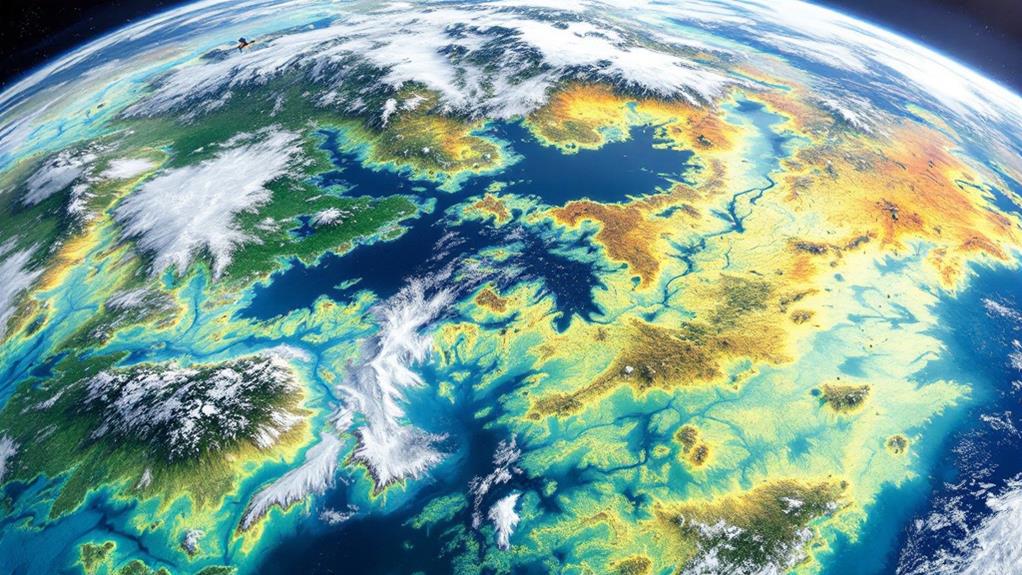
Satellite technology ushered in a fresh chapter for hydrology in the late 20th century. You'll find that remote sensing and satellite applications have revolutionized how we observe and analyze water resources on a global scale. These tools provide novel access to data, allowing you to monitor vast areas that were previously difficult or impossible to study.
Remote sensing has significantly improved wetland monitoring and stormwater management. You can now track changes in water bodies, assess flood risks, and evaluate the health of ecosystems with greater accuracy and efficiency. Here's how satellite applications have transformed hydrology:
- Enhanced spatial coverage: You can observe large-scale hydrological processes across entire watersheds.
- Improved temporal resolution: You'll get frequent, up-to-date information on water resources.
- Cost-effective data collection: You can gather data without extensive field campaigns.
- Integration with other datasets: You're able to combine satellite imagery with ground-based measurements for thorough analysis.
As satellite technology continues to advance, you'll see even more sophisticated applications in hydrology. From predicting droughts to managing water resources, these tools will play an increasingly crucial role in addressing global water challenges.
Climate Change and Future Challenges
As we look to the future of hydrology, climate change looms as a defining challenge. You'll need to understand how rising temperatures and shifting weather patterns are altering water availability patterns across the globe. Climate models predict increased precipitation variability, with some regions experiencing more frequent droughts while others face intensified flooding.
You'll have to adapt your hydrological methods to account for these changes. Traditional statistical approaches based on historical data may no longer be reliable, as past trends become poor predictors of future conditions. Instead, you'll need to develop more pivotal models that can incorporate evolving climate scenarios.
You'll also face challenges in water resource management. As water availability becomes less predictable, you'll need to design more resilient water supply systems and improve water conservation strategies. You'll have to balance competing demands for water among agriculture, industry, and urban populations in a changing climate.
Interdisciplinary collaboration will be indispensable. You'll need to work closely with climatologists, ecologists, and policymakers to develop all-encompassing solutions to these complex water-related challenges.
